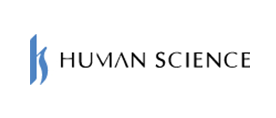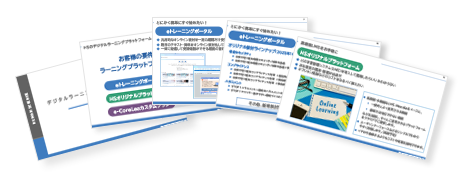2025.08.20
What is Critical Thinking? Explaining How to Develop the "Thinking Skills" Required for Young and Mid-Level Employees!

In recent years, the importance of "thinking skills" in companies has been increasing. Among them, "critical thinking," which forms the foundation of problem identification and problem-solving abilities, is one of the business skills sought by many companies.
"I can't express my thoughts well," "My points get off track," "My proposals lack persuasiveness"
It is precisely those who struggle with such concerns who should learn the basic attitudes and practical methods of critical thinking.
This article clearly explains the overview of critical thinking and how to apply it in actual business situations. At the end, we also introduce recommended e-learning materials for young and mid-level employees.
1. What is Critical Thinking?
Critical thinking is the ability to perceive things objectively, from multiple perspectives, and rationally.
Although it is called "critical," it does not mean denying others. Rather, it requires questioning your own thinking habits and assumptions and thinking logically.
For example, the following thinking habits can hinder logical reasoning.
- Bandwagon effect (making judgments influenced by others)
- Halo effect (being swayed by prominent characteristics)
- Unconscious bias (unconscious prejudice)
Recognizing these habits and adopting an attitude of questioning them is the first step in critical thinking.
2. The Necessity in Business
In business scenes, critical thinking is required in the following situations.
| Scene | Key Points for Application |
|---|---|
| Meetings | Organize the issues and engage in constructive discussions |
| Planning and Proposal Document Preparation | Enhance persuasiveness with a structure based on evidence |
| Problem Solving | Grasp the essence rather than superficial factors |
| Presentation | Ability to clearly convey conclusions and reasons |
Furthermore, by acquiring this skill from early-career and mid-level employees, the following effects can be expected.
- Develop the ability to think proactively
- Facilitate smooth communication with supervisors and colleagues
- Improve the accuracy of decision-making
3. Key Points for Practice
Critical thinking is not a skill you master once and for all; it is developed through practice.
By being mindful of the following steps, it becomes easier to apply in daily work.
◆ Step 1: Ask Questions
- Adopt the perspective of "Why?" and "Is that really the case?"
◆ Step 2: Break Down and Organize
- Be mindful of the MECE (Mutually Exclusive, Collectively Exhaustive) principle and break down elements
- Utilize four approaches: element breakdown, factorization, chronological breakdown, and contrasting concepts
◆ Step 3: Structuring
- Use the pyramid structure to diagram the conclusion, reasons, and evidence
◆ Step 4: Communicating
- Clearly convey the points using methods such as PREP, DESC, and SDS
By utilizing these frameworks, the quality of daily work, reports, and presentations will also improve.
> Related Service: e-Learning '-Critical Thinking for Young and Mid-Level Employees-'4. How to Learn and Apply
There are the following options for learning critical thinking.
| Methods | Features |
|---|---|
| Books | Ideal for understanding theory. However, it may be insufficient for practical application. |
| Seminars | You can learn practically through group work and other activities. However, it is costly and requires securing time. |
| e-Learning | You can learn at your preferred time and also check your understanding. It is easy to practice and review. |
Among them, e-Learning is particularly suitable for corporate training for the following reasons:
- Allows progress management
- Provides a uniform learning environment
- Enables learning regardless of time or place
Also, with e-Learning, you can repeatedly study in short sessions of about 20 minutes each, which improves retention rates.
5. Critical Thinking - Recommended Learning Materials
For young and mid-level employees, a highly recommended material that allows you to learn critical thinking from basics to practice in a short time is Human Science's e-Learning material "Critical Thinking for Young and Mid-Level Employees".
In this course, you can learn the following content:
- The basic attitude of critical thinking- Awareness of thinking habits and methods to correct them
- Organizing thoughts using MECE and pyramid structure
- Frameworks to enhance proposal structuring skills (such as PREP method, DESC method)
◆ Features
- A compact structure that can be learned in about 20 minutes
- Understanding can be checked with slides + audio + quizzes
- Easy to practice with concrete examples and exercises
◆ Recommended for
- Young employees who lack confidence in their own opinions
- Mid-level employees who want to make their proposals more persuasive
- Those who want to develop the ability to identify the essence of problems
6. Summary
In an "era without clear answers," the ability to think for oneself and arrive at a convincing conclusion is indispensable for all business professionals.
Critical thinking is not merely knowledge but a thinking skill acquired through practice.
First, understand the basic concepts and try to practice them little by little in your daily work.
For those who want to learn more efficiently, we highly recommend utilizing the e-learning materials.
Also, for those who want to further strengthen the foundation of logical thinking, we recommend taking the e-learning course in the same series, "-Problem Solving Techniques for Young and Mid-Level Employees-".
By applying the "thinking skills" learned in this material, you will be able to practice everything from identifying issues to formulating solutions.
At Human Science, we also offer a variety of training materials, ranging from business manners to courses on utilizing generative AI.
>>Human Science e-Training Material Manuscript Sales
We also support customization and multilingualization for each company, so please feel free to contact us if you have any requests.












